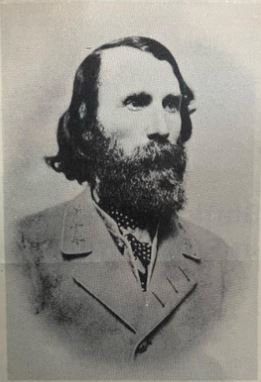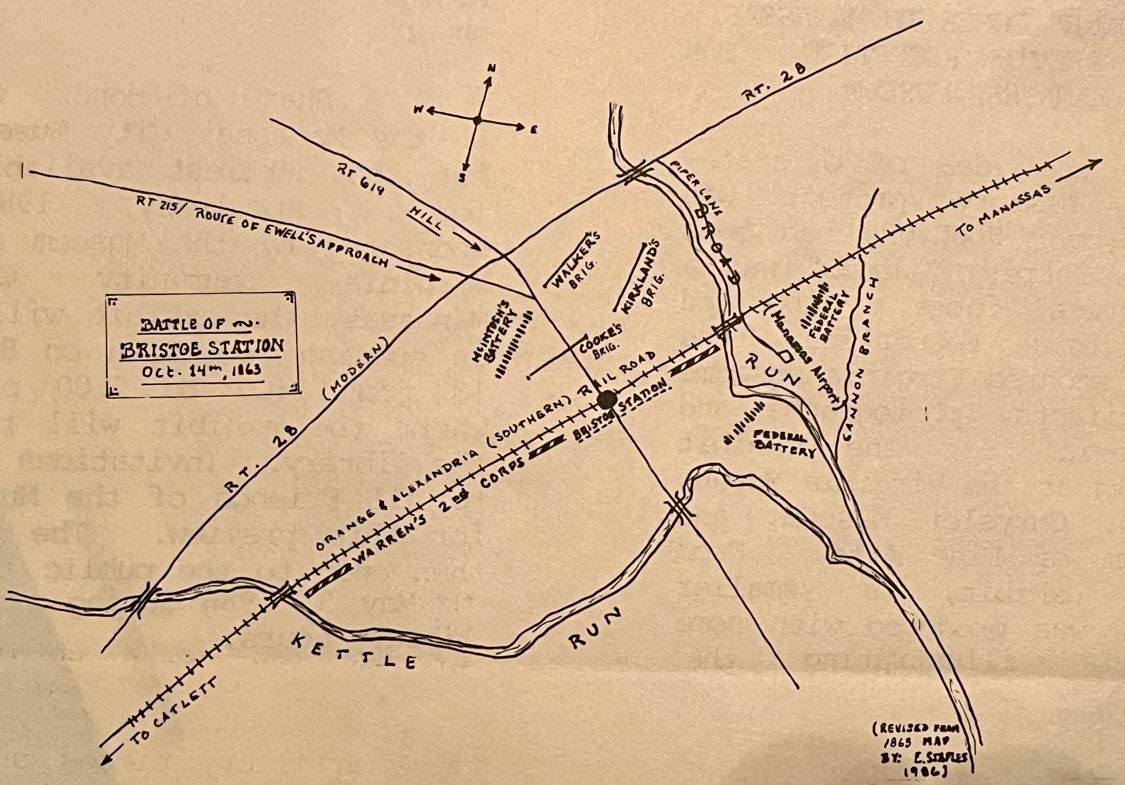
Bristoe Station Confederate Defeat in Prince William
As published in the Manassas Museum News, Volume 4, No. 3, March 1986
By William F. McGuinn
Although the Confederate army won two major victories in Prince William County, a third and lesser known battle (termed an engagement) in this County resulted in a galling defeat for the South. The First and Second Battles of Manassas in July, 1861 and August, 1862 had resulted in great victories for Southern arms. On the other hand, the Battle of Bristoe Station, located about three miles west of Manassas on the Orange and Alexandria Railroad, was a resounding defeat for the Confederate Army. This battle, which took place on October 14, 1863, resulted in abandonment of General Lee's attempt to trap part of Meade's Federal Army by a flank attack.
 General Ambrose Powell Hill, CSA. His impetuous attack at Bristow resulted in over 1,400 Southern casualties and the end of Lee's plan to destroy part of Meade's army in October 1863.
General Ambrose Powell Hill, CSA. His impetuous attack at Bristow resulted in over 1,400 Southern casualties and the end of Lee's plan to destroy part of Meade's army in October 1863.After Gettysburg, General Lee had returned his battered Army of Northern Virginia to the south side of the Rapidan River while Meade with the Army of the Potomac followed cautiously and took positions in the Culpeper area. By October the first, Meade's 9th and 11th Corps had been detached to Tennessee under General Joseph Hooker. Lee decided to attack Meade who then had only five corps with the hope of destroying part of Meade's army or at least driving him back to Washington. Lee would thus gain breathing space and time to recover strength. He decided on a flank attack. Since Longstreet's 1st Crops had been detached to Tennessee, General A. P. "Powell" Hill's 20,000 man 3rd Corps and Ewell's 2nd Corps (Jackson's old Corps) were to converge on Meade by different directions -- Hill from west to east and Ewell moving east towards Culpeper.
The movement began on Friday, October 9th when Hill and Ewell crossed the Rapidan. Surprise was lost when a Federal station on Pony Mountain read Confederate signal flags thus alerting Meade to a Confederate movement. Hill and Ewell reached Warrenton on October 13th. Ewell was to make the frontal assault but Meade moved rather rapidly eastward to Bristoe Station and Ewell was unable to keep up. Hill moved along the Warrenton- Alexandria Turnpike on the 14th and then to Broad Run Church and Greenwich. Further Bristoe, he east, near made contact with what he thought was only the fleeing Union 3rd Corps. Personally reconnoitering ahead, Hill saw the 3rd Corps fording Broad Run near Bristoe, apparently in full retreat.. General Heth's North Carolina brigades of General John R. Cooke and W. W. Kirkland in the lead and General Henry Walker's Brigade in support were exhorted by Hill to attack the retreating Federals across Broad Run. When Cook's men reached the rise in front of the run, they observed thousands of Federals close on their right flank emerging from along the railroad embankment where they had hidden. They were unseen by Hill in his hasty observation of the field earlier. These troops, supported by artillery on the south side of the railroad, comprised the entire Union 2nd Corps of General Warren. Their presence on the flank exposed Cook's Brigade to severe rifle and artillery fire. Kirland, who was to the left of Cooke was similarly subjected to this enfilade fire. Hill sent the divisions of Wilcox and Anderson to aid the beleagured Cook and Kirkland but too late to save them from extremely heavy casualties 700 and 600 men respectively including the wounding of both brigadiers. It had been a well-executed trap.
Although the Union Army withdrew from the area and Lee's army retained the battlefield, Lee's great disappointment with Hill was evident when Hill conducted him over the field of battle the next day. Lee remarked tersely, "well, well, General, bury these poor dead men and let us say no more about it." The campaign ended with Hill destroying a stretch of track on the railroad between Manassas and the Rappahannock to discourage Meade's return. A campaign begun with great optimism ended with bitter disappointment.
Southern casualties, mainly borne by the two North Carolian brigades were over 1,400 killed, wounded, and captured in addition to the loss of five artillery pieces and the mortal wounding of General Carnot Posey.
General A. P. Hill accepted full responsibility for the debacle at Bristoe which was due to three major errors on his part: first was his incomplete reconaissance of the Federal position; second, his impetuous and hasty order to General Heth to press the attack, and third, his failure to order immediate withdrawal northward when the presence of the Federal Second Corps on the flank became known.
General Heth apparently received no official blame as he followed orders to the letter. Thus ended a campaign that, had Lee's plan been successful, would have only prolonged the war. The Federal victory at Bristoe was the harbinger of worse days to come for the South, as Lee's army was to seP 18 more months of such attrition on the way to a village called Appomattox.

Ed. note: Bi11 McGuinn of McLean, Virginia is well-known in the historical field for his expertise in military history. His recent book: Military Button Makers and Dealers is becoming a standard reference for museums and collectors. The Museum has been fortunate enough to have had previous article in by Bill McGuinn the May, 1984 newsletter on political stationary of the Civil War.